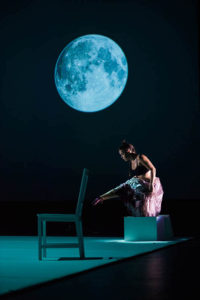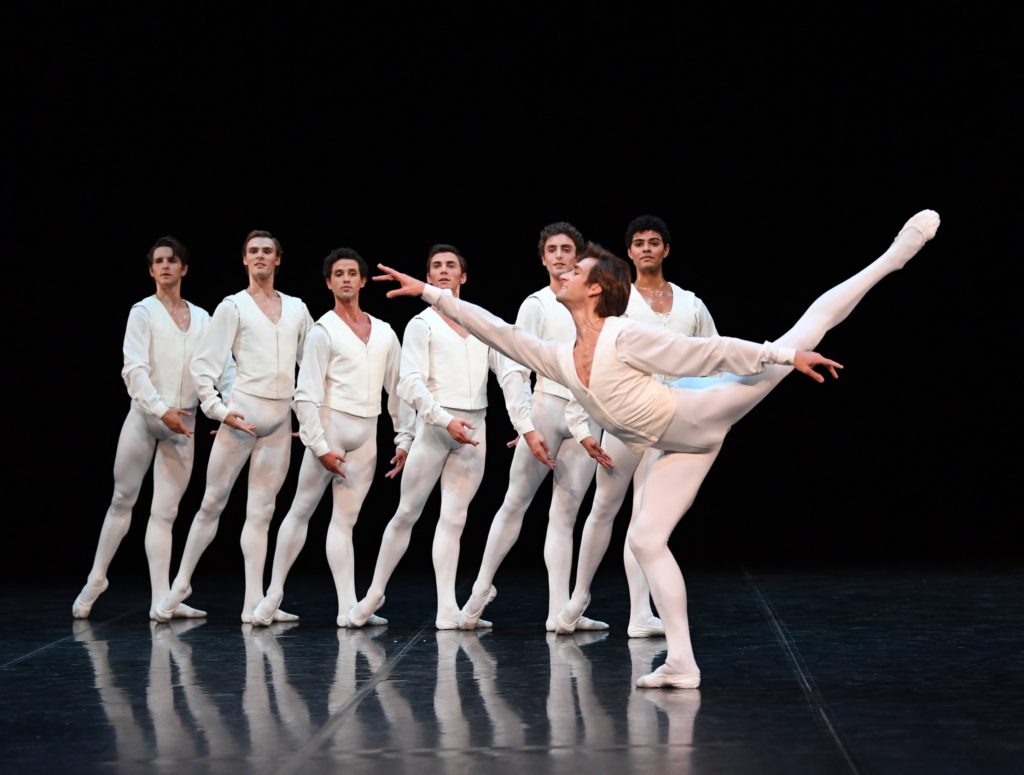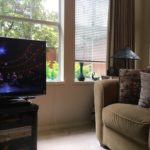Life Moves: From social distancing to “taking the knee” - Vancouver Ballet Society
- Home
- Life Moves
- Life Moves: From social distancing to “taking the knee”

By Kaija Pepper
The woman coming toward me moves to the edge of the sidewalk, right up against the garden running alongside. I step onto the grass boulevard bordering the sidewalk’s opposite edge. It’s far enough to make for close to the prescribed two metres between us, roughly two arm-length’s apart. Since a smile would be invisible under my mask, I raise my hand in an open-palm salute, and she, mask-less, nods warmly.
This is one of the many forms of the COVID-19 dance, an improvisation based on maintaining separation between bodies. Whenever I leave the safe solitude of my home to make my way through Vancouver streets, I appreciate passersby who honour that dance, even in its most basic form of simply keeping their distance. But I treasure those who add personal touches: a nod, a small sashay as they quick-step into a change of position, a slight bow if they choose to wait at a corner and let me pass. Together we turn our brief encounter into a courtly dance of courtesy and respect.
Other times, when a gang of two approaches side-by-side, taking up most of the sidewalk and showing no sign of changing formation to single file, I step onto the road, possibly squashing between parked cars to get there.

As a dance critic at a time when studios and theatres are closed, I’m hungry to find dance somewhere, anywhere. The last time I attended a formal public presentation was in March, on film: Impulso, Emilio Belmonte’s documentary about Spanish flamenco star Rocío Molina. I happened to sit next to a couple of acquaintances from the dance world; one offered me some popcorn, which I declined, fears of catching the virus already in my consciousness. But I was comfortable sitting next to them in the crowded auditorium, watching the magnificent Molina and learning about her “impulsos,” improvised performances intended to inspire her and her team in the creation of their next work. The film was my research for Molina’s Caída del Cielo (Fallen from Heaven), set to tour to Vancouver three weeks later — but, by then, theatres were closed as the city shut down and we were told to stay home, except for essential outings, in order to control the spread of the virus.
Here we are, in early summer, and around the world theatres are still mostly closed. Over the last while, my inbox has become increasingly inundated with links to online dance, on which I began to gorge. Sometimes, I just watch at my desk, on my computer, but more substantial offerings are cast onto my larger TV screen and I move to the best seat in the house.
Much of the current crop of digital dance is filmed by the dancers themselves, alone in their homes, their individual snippets cut together in friendly montages designed to keep fans entertained. Previously recorded live performances are also being freely offered, through which I have become familiar with a range of otherwise unavailable repertoire. Cathy Marston’s work has never been staged here, so it was appreciated when San Francisco Ballet made her Snowblind available online for a week at the end of May. Shortly after, I saw Stuttgart Ballet in John Cranko’s Concerto for Flute and Harp, titled after the Mozart music it is set to.
Live recordings of home season performances tend to give a rather distant view of the whole stage, flattening out detail and nuance. But as the Stuttgart dancers’ precise footwork and crisp pirouettes filled my screen with a lacework of movement, I fell in love with this old Cranko piece from 1966. Despite its age, the ballet was politically astute. Made in reaction to a traditional staging of Giselle the company was then working on, Concerto for Flute and Harp featured an ensemble of graceful men in white tights and tunics, a deliberate contrast to Giselle’s corps of ethereal female wilis in white tutus. This simple turnaround of gender expectations — along with the performers’ welcome diversity of skin colour — made a simple but powerful statement that resonated.

The most visceral response, however, came during a livestream from the Royal Opera House at Covent Garden on June 13. In a gala mixed bill of mostly song, there was one dance, a five-minute pas de deux by the Royal Ballet’s Francesca Hayward and Cesar Corrales, made for the occasion by artist-in-residence Wayne McGregor. A duet was possible because the dancers are a real-life couple and could break social distancing rules. Titled Morgen! (Tomorrow!) after the Richard Strauss song to which it is set (sung live by Louise Alder), the choreography was graceful and intimate, with nothing edgy or ground-breaking about it. Yet there were a few moments when Hayward was cradled across the length of Corrales’ arms, which were extended out to the sides, as he turns, and she is safely supported by his muscles and bones in real time and real space — and the movement carried across the digital interface of live streaming with spine-tingling presence. Such public body-to-body contact felt almost nostalgic!
After Morgen! was over, artists and crew appeared onstage kneeling, a now familiar pose in support of Black Lives Matter. Until then, my solo viewing late on a Saturday morning of this faraway event — happening in a different continent and in a time zone eight hours ahead — had felt very separate and even a tad lonely, but this physical statement of solidarity placed us all together in the same contemporary world, fighting the same fight for racial equality. Everyone onstage was spaced to maintain a safe distance from each other, a reminder about that other important fight we can only win together.

